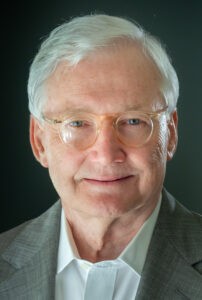It is becoming clearer by the day that we are living at a turn of the age, as one era ends and another is beginning — religiously, socially, politically and globally.
The words of the Irish poet W.B. Yeats in 1919, at the end of World War I, seem eerily, frighteningly to describe a time like ours:
Things fall apart; the centre cannot hold ….
The ceremony of innocence is drowned;
The best lack all conviction, while the worst
Are full of passionate intensity.

Stephen Shoemaker
The war in Ukraine has begun, and our hearts are in our throats. Our prayers search for words. We are being called back to prayer.
In T.S. Eliot’s “Little Gidding,“ he writes:
You are not here to verify,
Instruct yourself, or inform curiosity
Or carry report. You are here to kneel
Where prayer has been valid.
Can our churches in America become such places, or return to such places?
Yes, we join in the kind of prayer Abraham Heschel described as he joined Martin Luther King Jr. in the Selma march: “My legs were praying.” But what about the inner places from which prayer springs, sometimes, as Paul put it, “with cries too deep for words?”
The writer Kathleen Norris said that sometimes her most valid prayers are when she says to God: “God, I mean this prayer even though I don’t know what I mean.” Do we let ourselves dwell at the wordless level of prayer?
The poet Mary Oliver instructs us in her poem “Praying”:
… just
pay attention, then patch
a few words together and don’t try
to make them elaborate, this isn’t
a contest but the doorway
Into thanks, and a silence in which
another voice may speak.
Can our churches be a place where prayer is valid? Do we have the courage to pray when prayer seems so ineffectual? Our American life prizes efficiency. Results! Prayer is a counter-cultural act. We may need to develop new forms of prayer when the old forms seem so rote and as dry as ashes.
We are praying for Ukraine today. The prayers are wrenched from our hearts for the people of that nation and for a world order on the brink. What, then, about the practice of intercessory prayer? Do our doubts outweigh our hope? Do we pray anyway? The past archbishop of Canterbury Rowan Williams in a sermon on intercessory prayer, said:
The prayer of intercession at its simplest is thinking about something or someone in the presence of God. … Then it is a struggle all right, the struggle not to let God and the world fall apart from each other because that is the center of this prayer, the recognition that, in spite of appearances, God and the world belong together. There is no place where the love of God can’t go.
Can we believe this enough to pray?
The church time and time again has been renewed at the turning of the age. We are driven to our knees, in our hearts if not with our bodies. I once invited a Black preacher to preach in one of my churches. The next week he wrote, “Remember me when you are on your knees.” I was moved. He was in a church where prayer was valid. The renewal of the church at the turn of the age requires many things. One of them is the recovery of prayer.
Stephen Shoemaker serves as pastor of Grace Baptist Church in Statesville, N.C. He served previously as pastor of Myers Park Baptist in Charlotte, N.C.; Broadway Baptist in Fort Worth, Texas, and Crescent Hill Baptist in Louisville, Ky.
Related articles:
Baptists worldwide join in day of prayer for Ukraine
Through Scripture, understanding that my speech is a form of prayer | Opinion by Earl Chappell
A vote is ‘a kind of prayer,’ Warnock says in first Senate speech


